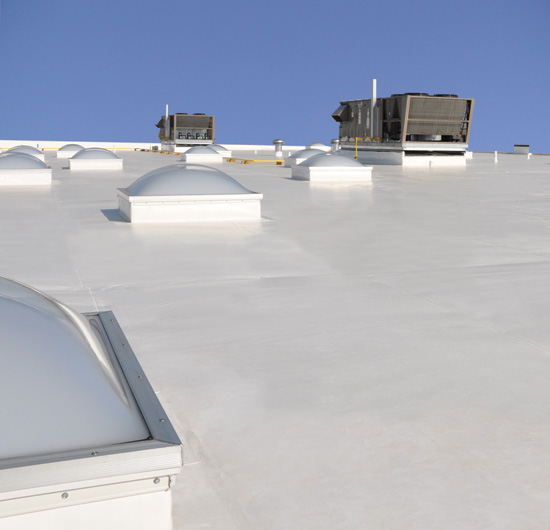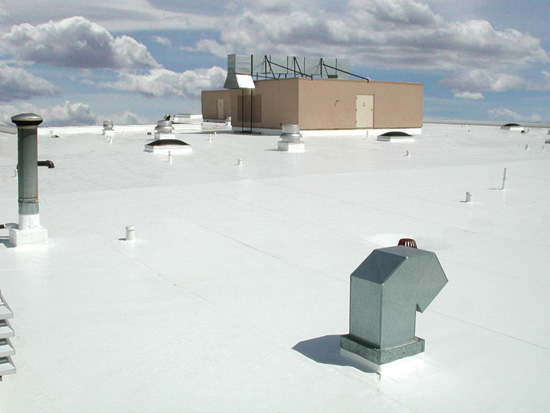The Architect’s Guide to Specifying Sustainable Single-Ply Roofing Membranes: NSF/ANSI 347
As green building moved into adulthood, highly scientific and rigorous certifications for product sustainability arose, with the initial focus on single attributes such as low VOC, energy saving, or recyclable.
The single-attribute mindset often left specifiers wondering: What is the story of this product during its life cycle, from cradle to gate, cradle to grave, or cradle to cradle?
Life-Cycle Assessment and Multi-Attribute Certifications

Photo courtesy of Duro-Last
Single-ply membrane roofs are known for their durability and long life. The NSF/ANSI 347 assessment quantifies those qualities and adds more measurable criteria for use in specifying a sustainable roofing material.

Photo courtesy of Duro-Last
Architects and specifiers can now choose a single-ply roofing membrane based on this wide-reaching sustainability assessment.
And thus emphasis on a product's life-cycle analysis (LCA) emerged, along with Environmental Product Declarations (EPD).
According to Stanley Graveline, who sits on the technical committee of the CFFA, Chemical Fabrics and Film Association – Vinyl Roofing Division, “Today's emphasis on green measurement systems and labels has led to a proliferation of unsubstantiated product marketing claims...The availability of verified EPDs helps architects, roofing consultants, contractors, and owners accurately assess a product's impact on the environment.”
In recent years, interest in creating EPDs has grown. The CFFA – Vinyl Roofing Division announced an EPD for white, single-ply polyester-reinforced PVC roofing membrane. Of course, the U.S. Green Building Council's LEED rating system awards Building Product Disclosure and Optimization credits for projects that include at least 20 building products with published EPDs. Plus, the Green Building Initiative's Green Globes rating system provides a prescriptive path with reference to industry-wide or product-specific EPDs.
Multiple attribute standards are a growing trend among industries like roofing, resilient flooring, commercial furnishings, gypsum board, and flooring tiles.
How the NSF/ANSI 347 Standard Was Created
Within the roofing membrane industry—which includes the manufacturers as well as those who specify and install it—appreciation of the material's favorable and robust LCA is widespread. The goal within the industry was to quantify and document the material's sustainable qualities using established scientific principles and standards. The objective in developing the standard was to have a comprehensive standard that would fully consider all relevant elements of sustainability.
In a multi-year effort, a large number of stakeholders developed the NSF/ANSI 347 standard in a publicly transparent voting process through NSF's international consensus-based and ANSI-accredited standard development process. They included membrane manufacturers, architects, and engineers who specify roofing materials, roofing industry consultants, trade associations, national regulatory agencies that regulate either environmental practices or roofing specifications, and non-governmental organizations.
The products that fall under the scope of this standard include polyvinyl chloride (PVC), thermoplastic polyolefin (TPO), ethylene propylene diene terpolymer (EPDM), ketone ethylene ester (KEE), and polyisobutylene (PIB) products.
The benefits for membrane manufacturers who achieve a rating under this standard are numerous. If a manufacturer claims their product is environmentally preferable and has a superior sustainable “score,” that claim can be backed up by science and data, eliminating incidences of greenwashing. Transparency is the goal.









